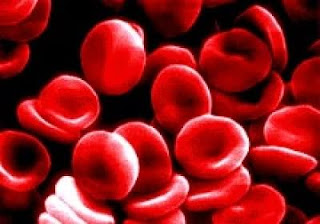Nursing Diagnosis for Diabetes Mellitus
1. Nursing Diagnosis : Fluid Volume Deficit related to osmotic diuresis.
Goal:
Demonstrate adequate hydration evidenced by stable vital signs, palpable peripheral pulse, skin turgor and capillary refill well, individually appropriate urinary output, and electrolyte levels within normal limits.
Nursing Intervention:
1.) Monitor vital signs.
Rational: hypovolemia can be manifested by hypotension and tachycardia.
2.) Assess peripheral pulses, capillary refill, skin turgor, and mucous membranes.
Rational: This is an indicator of the level of dehydration, or an adequate circulating volume.
3.) Monitor input and output, record the specific gravity of urine.
Rational: To provide estimates of the need for fluid replacement, renal function, and effectiveness of the therapy given.
4.) Measure weight every day.
Rational: To provide the best assessment of fluid status of ongoing and further to provide a replacement fluid.
5.) Provide fluid therapy as indicated.
Rational: The type and amount of liquid depends on the degree of lack of fluids and the response of individual patients.
2. Nursing Diagnosis : Imbalanced Nutrition Less than Body Requirments related to insufficiency of insulin, decreased oral input.
Goal:
Digest the amount of calories / nutrients right
Shows the energy level is usually
Stable or increasing weight.
Nursing Intervention:
1.) Determine the patient's diet and eating patterns and compared with food that can be spent by the patient.
Rationale: Identify deficiencies and deviations from the therapeutic needs.
2.) Weigh weight per day or as indicated.
Rational: Assessing an adequate food intake (including absorption and utilization).
3.) Identification of preferred food / desired include the needs of ethnic / cultural.
Rational: If the patient's food preferences can be included in meal planning, this cooperation can be pursued after discharge.
4.) Involve patients in planning the family meal as indicated.
Rationale: Increase the sense of involvement; provide information on the family to understand the patient's nutrition.
5.) Give regular insulin treatment as indicated.
Rational: regular insulin has a rapid onset and quickly and therefore can help move glucose into cells.
c.
Nursing Diagnosis : Risk for Infection related to hyperglikemia.
Goal:
Identify interventions to prevent / reduce the risk of infection.
Demonstrate techniques, lifestyle changes to prevent infection.
Nursing Intervention:
1). Observed signs of infection and inflammation.
Rationale: Patients may be entered with an infection that usually has sparked a state of ketoacidosis or may have nosocomial infections.
2). Improve efforts to prevention by good hand washing for all people in contact with patients including the patients themselves.
Rationale: Prevents cross infection.
3). Maintain aseptic technique in invasive procedures.
Rational: high glucose levels in blood would be the best medium for the growth of germs.
4). Give your skin with regular care and earnest.
Rational: the peripheral circulation may be disturbed that puts patients at increased risk of damage to the skin / skin irritation and infection.
5). Make changes to the position, effective coughing and encourage deep breathing.
Rational: memventilasi Assist in all areas and mobilize pulmonary secretions.
Healthy Diet for Diabetes Mellitus
Nursing Diagnosis and Nursing Intervention for Diabetes Mellitus
Nursing Care Plan for Diabetes Mellitus
12 Nursing Diagnosis for Diabetes Mellitus
Nursing Care Plan for Diabetes Mellitus
Nursing Intervention for Diabetes Mellitus - Deficient Fluid volume
 Chest pain caused by heart burn is accompanied by a burning sensation. Chest pain, pressure or tightness that is not accompanied by a burning sensation is cause for immediate medical attention. Whenever chest pain is involved it is best to use caution.
Chest pain caused by heart burn is accompanied by a burning sensation. Chest pain, pressure or tightness that is not accompanied by a burning sensation is cause for immediate medical attention. Whenever chest pain is involved it is best to use caution.












